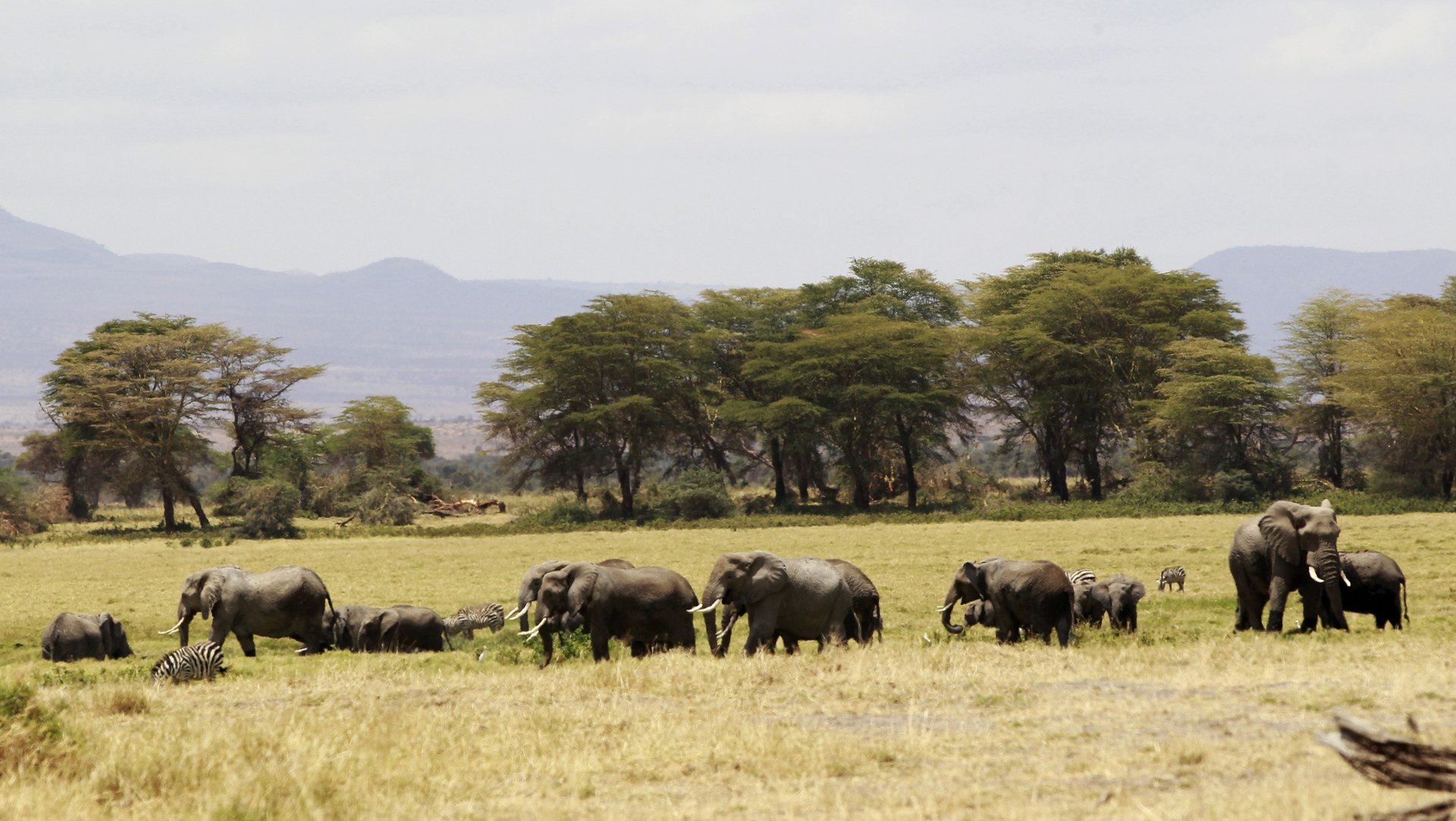Using honey bees to protect one of Africa’s best-selling liqueurs
Honey bees are shaping up to be the best protectors of marulas, the southern African trees responsible for creamy Amarula, one of the world’s best-selling liqueurs.


Honey bees are shaping up to be the best protectors of marulas, the southern African trees responsible for creamy Amarula, one of the world’s best-selling liqueurs.
More than one million cases of the liqueur, which is made from the tree’s berries, are sold each year, according to trade journal Spirits Business, and the drink is a top-selling brand for its producer Distell, alongside Gordon’s Gin and Nederberg wine. Although there is no breakdown of which country likes its Amarula tipple the best, Canadians and Germans are both drinkers of the liqueur dubbed “the taste of Africa.” South Africa, where the drink is made, consumes about 30% of production.
But humans aren’t the only creatures with a hankering for marula berries: so are elephants, whose enthusiastic rubbing up against the trees makes them a major threat to their existence. According to new research, the African honey bee could provide a solution.
For years, tales around fires in safari camps included elephants, tipsy on fermented marula berries, rampaging unsteadily through the bush, and generally being the drunken catastrophe of the animal kingdom. Sadly, scientists have debunked the myth that elephants get drunk by eating fermented marula. But the giant mammal is still a hazard for trees and a major culprit in the destruction of these fundamental features of the savanna landscape. Conservationists have long been concerned about the impact of African elephants on these and other large tree species.
In places where there are many elephants, marula trees have been severely bark-stripped, toppled, or had their main stems snapped by elephants, according to new research published in the Journal of Biological Conservation. Some parts of South Africa’s Kruger National Park, for example, have seen a quarter of their marula trees damaged or destroyed.
Previous research has shown that beehive fences deterred elephants from scavenging on crops. In Kenya, where wildlife is not only found in national parks, raiding elephants are in conflict with farmers who are trying to safeguard their crops. Electric fences are not economically and practically feasible, so scientists suggested bees. The researchers built a 90-square-meter (970-square-foot) fence, with nine interconnected beehives, and found elephants were less inclined to raid bee-protected farms. The African honey bee, unlike its European cousin, is particularly aggressive, something which elephants appear to be aware of.
So researchers decided to see whether bees could protect marulas too. The research, a collaboration between South African, Kenyan, and British scientists, identified 150 marula trees in the Jejane Private Nature Reserve, within the Greater Kruger National Park in South Africa. In 50 trees, they hung occupied beehives as well as dummy empty beehives on either side of a tree. Another 50 trees were wrapped with wire mesh, which is commonly used to protect trees against elephants. An additional 50 trees were used as a control group to see what would happen if there was no human intervention in elephant rampaging.
Only one bee-protected tree was damaged by elephants, compared to a quarter (14) of the wire-wrapped trees and more than half (27) of the “control” trees.
While the beehives are more expensive than wire-netting, this method also has the option of honey production, says lead author Robin Cook, with the University of Witwatersrand in Johannesburg.
“This innovative study demonstrates that there are peaceful means with which we can foster the important ecological linkages between elephants, trees, and bees,” Michelle Henley, director and principal researcher at the non-profit Elephants Alive says. “The bees not only protect the large trees from severe impact but as pollinators they also ensure valuable seed banks for the surrounding landscapes.”
More seed banks mean healthier marula tree populations—safeguarding the world’s supply of Amarula.
Amarula producer Distell did not respond to queries at the time of publication.